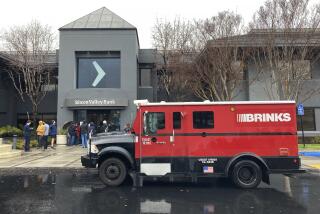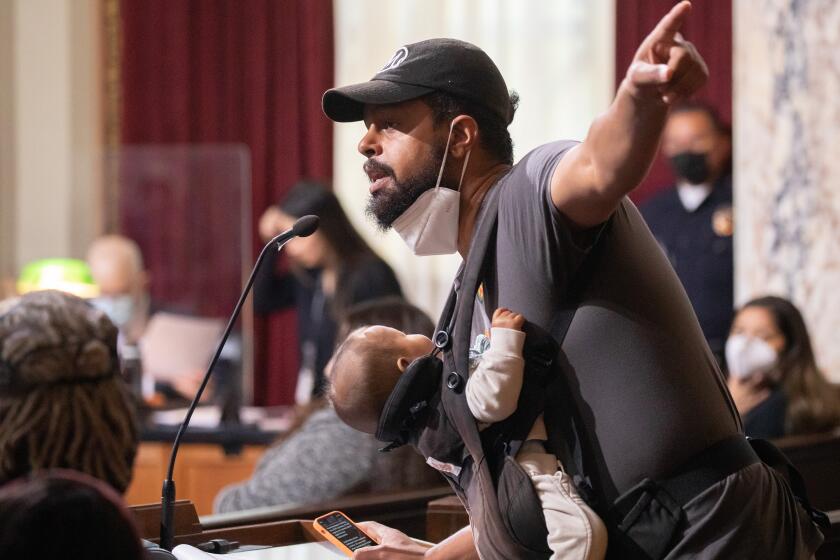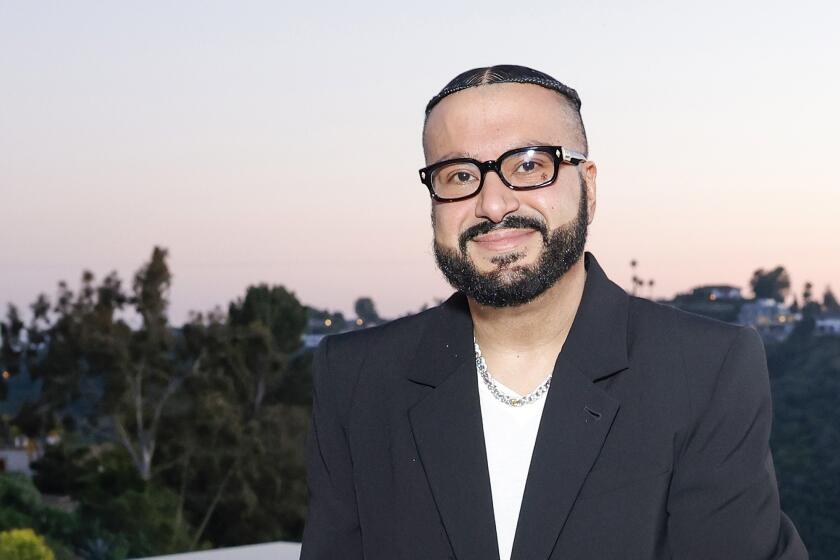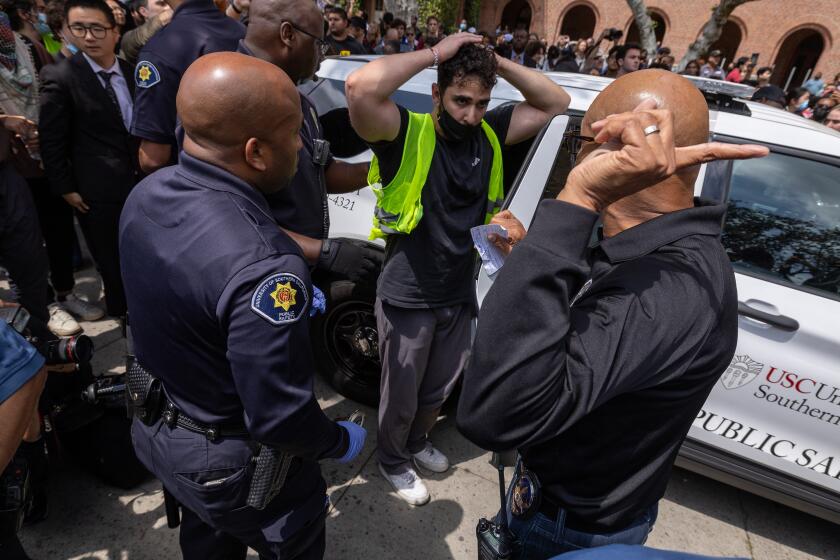With Governor’s Help, San Diego Sits Tight on Pollution Control Panel
For years, San Diego County has battled successfully to maintain equal representation on the state Air Resources Board with the pollution control districts surrounding Los Angeles and San Francisco.
But San Diego’s success has so far deprived those two districts--the state’s two largest, where most of California’s industrial pollution is generated--of permanent representation on the seven-member state board.
The battle has become a recurring rite of spring and summer in Sacramento since the Legislature, in 1980, added three local representatives to the board to curb what some felt was overzealous air quality enforcement by the administration of former Gov. Edmund Brown Jr.
Under a rotation system worked out five years ago to appease San Diegans, the two large districts have representatives on the state board two out of every three years, as does San Diego. A third slot is reserved for a representative of the state’s 41 other air pollution control districts.
San Diego legislators, who last year engineered a narrow defeat of a bill to end the rotation and give permanent seats to South Coast and Bay Area representatives, faced defeat themselves this time under either of two bills introduced this year to restructure the state Air Resources Board.
Late Tuesday, however, San Diego officials got word that Gov. George Deukmejian had come to their rescue. Deukmejian agreed to endorse a compromise proposal to give permanent board seats to the San Diego, Bay Area and South Coast regions, assistant press secretary Kevin Brett confirmed.
The compromise, which now must be added to either a bill by Assemblyman Charles M. Calderon (D-Alhambra) or another by state Sen. Dan McCorquodale (D-San Jose), would increase the size of the board from seven to nine members.
In addition to the local representatives, the compromise calls for adding a fifth “technical member.” Acting ARB Chairwoman Jananne Sharpless had reportedly opposed restructuring the board unless the technical experts on the board --which under current law includes a health professional, an automotive engineer and a chemist or meteorologist--would still outnumber political appointees.
Before Deukmejian’s compromise plan was announced, Calderon’s bill was approved 8-0 by the Senate Governmental Organization Committee Tuesday. Calderson said afterward he would agree to such a compromise if Deukmejian endorsed it. And Steve Burrell, an aide to McCorquodale, whose bill is scheduled to be heard by the Assembly Ways and Means Committee today, said McCorquodale would offer amendments reflecting Deukmejian’s compromise at the hearing.
As approved by the Senate committee Tuesday, Calderon’s bill would have guaranteed permanent seats for South Coast and Bay Area representatives while placing San Diego in a no-win competition with 41 other, mainly rural, air pollution districts. The number of board members would have remained at seven.
McCorquodale’s measure would increase the board size to eight, placing San Diego in competition with Sacramento and Ventura counties for one slot. McCorquodale’s bill had no guaranteed rotation system for those three counties, but guaranteed permanent representation for both the South Coast and Bay Area districts.
The compromise, said John Witzel, lobbyist for the City of San Diego, “puts us in a better position than we have ever been in.”
The importance of local representation on the state board, which sets policy and oversees the enforcement efforts of local pollution control agencies, is disputed.
Some say it is just a matter of petty jealousy among political jurisdictions, while others say it is crucial to ensure that the peculiar pollution control problems of one area are not sacrificed because of differing situations elsewhere.
The state board originally comprised only the various technical experts, with no local representatives.
“Think of that smog check,” said former San Diego County Supervisor Tom Hamilton, the last San Diegan to serve on the state board. “If you just had technical people on the board, that thing would have been a nightmare.”
Officials from the San Francisco Bay and Los Angeles-Orange County areas say the rotation system has been awkward and has not provided for adequate representation.
But they say their effort to change the arrangement was never meant as an attack on San Diego.
The officials pointed out that a study commissioned by the Legislature--a study authored, coincidentally, by William Simmons, a former pollution control director for San Diego County--recommended in 1980 that the South Coast and Bay Area districts get permanent seats on the state board.
“Fortunately for them, San Diego has doesn’t have the problem that our part of California has,” added Orange County Supervisor Harriett Weider, who currently represents the South Coast district on the board.
But Assemblyman Larry Stirling (R-San Diego) viewed it as an attempt by the more powerful legislative delegations from the South Coast and Bay Area regions “to gang up on” San Diego.
“It was pure politics,” echoed former Supervisor Hamilton, who ended a two-year term on the state board in January.
Assemblyman Steve Peace (D-Chula Vista) said the South Coast and Bay areas may have been threatened by the presence on the board of San Diego, which has demonstrably cleaner air than the state’s other urban areas and a reputation for aggressive air quality enforcement. Stirling and Peace both pressured Deukmejian to ensure San Diego County representation in any board restructuring.
“I would consider it an aggressive anti-San Diego act if the governor does not support a compromise,” Peace said, before the governor’s support of the compromise position was announced.
The Bay Area Air Pollution Control District includes nine counties in the San Francisco Bay region. The South Coast district includes Los Angeles, Orange and the more urbanized sections of Riverside and San Bernardino counties.
The San Diego district is the largest of the 36 air pollution control districts in the state that encompass a single county.
More to Read
Start your day right
Sign up for Essential California for news, features and recommendations from the L.A. Times and beyond in your inbox six days a week.
You may occasionally receive promotional content from the Los Angeles Times.






